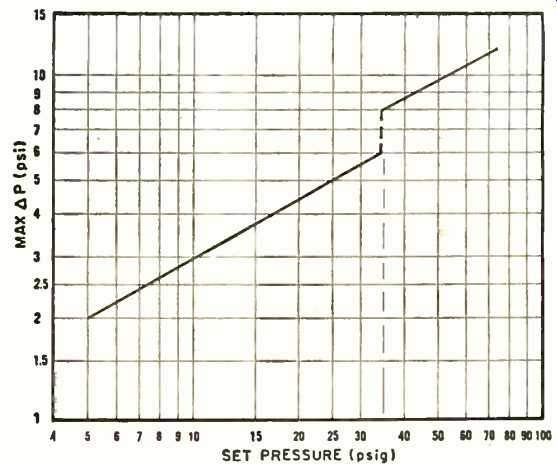
above: Curve shows the maximum difference in psi that may be expected on
a typical production pressure switch, in this case a Sigma-Netics Series
703, between the actuation and reset pressures under normal operation. Average
values of 70 °F run 1/3 less.
PRESSURE-sensitive switches perform a single and very simple function: to make or break an electrical contact when a specific pressure is reached in a gaseous or liquid system. The switches are used when specifications require changes in fluid pressure to be monitored or controlled. A variety of switches is available--ranging from those operating at over 25,000 psi to pressures in fractions of an inch of mercury.
The actuating mechanism of such switches usually uses a pressure-sensitive diaphragm that is coupled to an electrical switch, frequently of the sensitive snap-action type. The switch is usually well sealed and enclosed so that the mechanism is not affected by the fluid being controlled. When the diaphragm is actuated by pressure from a thermostatic element, then we have a temperature-sensitive switch.
Actuation of the pressure-sensitive switch, as well as de-actuation, occurs within a specified range of pressures. This range included a tolerance which will vary depending on the accuracy required and the pressure range of the switch (see graph). Only the required accuracy should be specified as the tolerance, not the best available.
Other parameters specified for these switches include proof pressure and burst pressure. The proof pressure is the maximum pressure that can be applied without a calibration shift in the actuation and de-actuation points. Good design requires that the proof pressure of a switch be a minimum of one and a half times the maximum system pressure.
The burst pressure of a pressure switch is the maximum pressure to which the switch can be subjected without rupture or damage. Usually, burst pressure is at least two to two and a half times the pressure in the system under normal operating conditions. Switches of this type are usually highly resistant to shock and vibration.
(source: Electronics World, Oct. 1967)
Also see: Toggle Switches